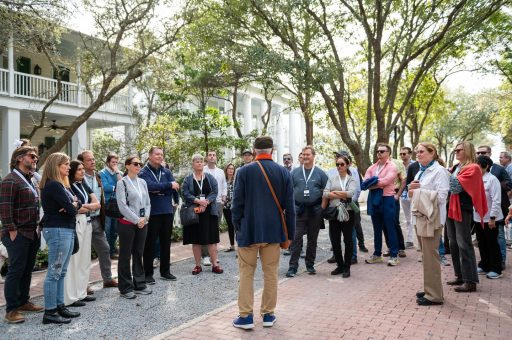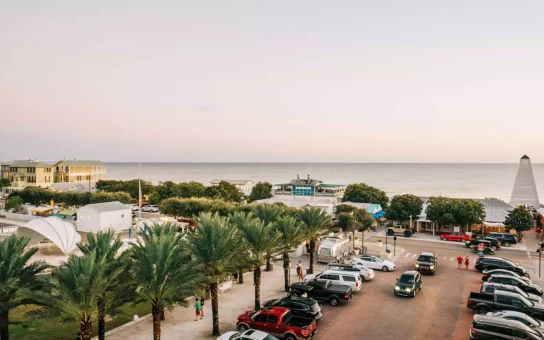The Seaside Institute’s intern shares a beginner’s guide to New Urbanism
If you’ve spent time in Seaside, you’ve more than likely heard about New Urbanism. But you might not know exactly what that means. We’ve broken down some of the terms you’ll see here and how they’re defined, along with a history of how the town came to be.
A brief history:
Seaside was the invention of its town founders and planners with a vision to break out of American Suburbia. The founders saw suburbia as ruining the American landscape, creating communities only accessible by cars that segregated classes, alienating people from their neighbors. They also found that the suburbs were not environmentally sustainable. In the early 1980s, Robert and Daryl Davis created Seaside, a New Urbanist town, which looked to pre-automobile methods of city planning.
What caused American Suburbia
In the 1920s, a Supreme Court decision ruling set a precedent that created what we know as functional zoning. Functional zoning means that cities can create districts such as residential, commercial, industrial and more, emphasizing the power of private property over the public realm. This creates functionally dead zones, as the residential areas are empty in the daytime while the commercial areas are empty in the mornings and evenings. Vibrant neighborhoods are created by an even spread of people with different schedules and purposes throughout the day — that is, a mixed-use, multi-purpose district.
After World War II ended, the problem of functional zoning was made worse by the G.I. Bill, which made it easier for veterans to buy homes. These federally-insured mortgages only applied to new construction, not renovations on existing homes, which incentivized moving out of cities. As a result, cities became functionally dead and dangerous.
The end of World War II also saw wartime industry, like shipbuilding and aircraft construction, pivot into car production. Low taxes on gas helped the car industry expand, and new interstate highways were built for easier cross-country travel and military use. The expansion of roads created “suburban archipelagos,” towns which could not be navigated easily on foot.
What is New Urbanism
New Urbanism is a return to traditional town planning, in which neighborhoods have a diverse mix of people, uses and architecture, all designed with humans — not cars — in mind. With multi-use zoning on properties, neighborhoods have an even spread of people in the community all day long for different purposes, and diverse populations occupy the same spaces. The community is small, making it largely walkable and self-contained, with meaningful links to other towns and cities. Lastly, the architecture and landscape is designed on a human scale.
Seaside rethinks the importance of the car in daily life. The town is a 10-minute walk from end to end, and a five-minute walk from the town center, making daily needs easily accessible without a car. This is important because people without driver’s licenses no longer rely on the car — children can walk to school, grandparents can walk to the pharmacy, and any member of the household can run an errand. Note that the streets are narrow, making them more suitable for walking or biking rather than driving.
How New Urbanism focuses on outdoor spaces
Seaside also emphasizes the importance of public life over private life. The architectural code mandates small houses with front porches on small lots, which force people out of their homes to interact with other people. Rather than large private outdoor spaces, like backyards or gardens, Seaside has Central Square, Ruskin Place and public beach pavilions, which bring the community together in shared outdoor spaces. Seeing your community face to face, either at a Central Square movie night or passing by on the front porch, makes a town safer.
We also see a diverse mix of uses in the Seaside public spaces. In Central Square, four-story buildings are occupied by retail, groceries, restaurants and cafes on the first floor. The second story is rented out to office spaces, like architects and commercial developers. The upper stories are residential spaces, so a mix of age groups, families and incomes live in the community, making it more vibrant.
Lastly, Seaside is designed with a form-based architectural and zoning code, meaning that a property owner can build whatever they desire as long as it has key elements of the code, such as wood siding, a metal roof or a front porch. This allows for a variety that adheres to the regional vernacular — the architecture of Seaside looks like it belongs in its region.
Notice how often you truly have to get into your car in Seaside and consider the difference it makes in your daily life. If you have an hour lunch break, do you spend it running errands in your car? Or can you walk home, to a restaurant, out to meet friends, and enjoy your time? New Urbanism seeks to change the way people live, emphasizing quality of life over distance traveled.







